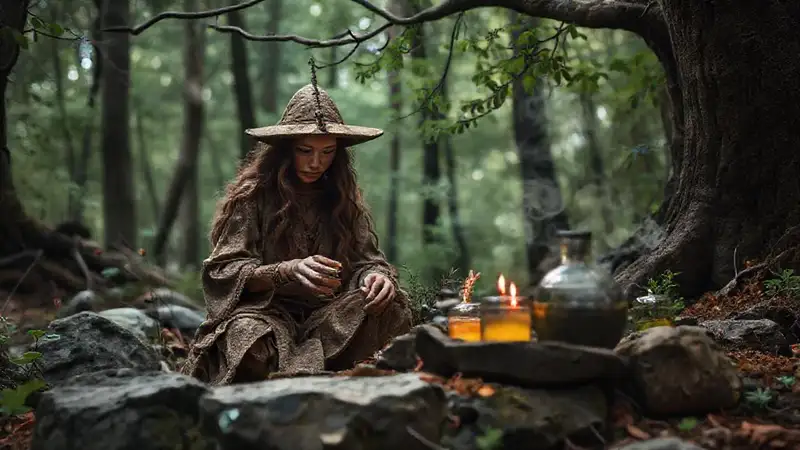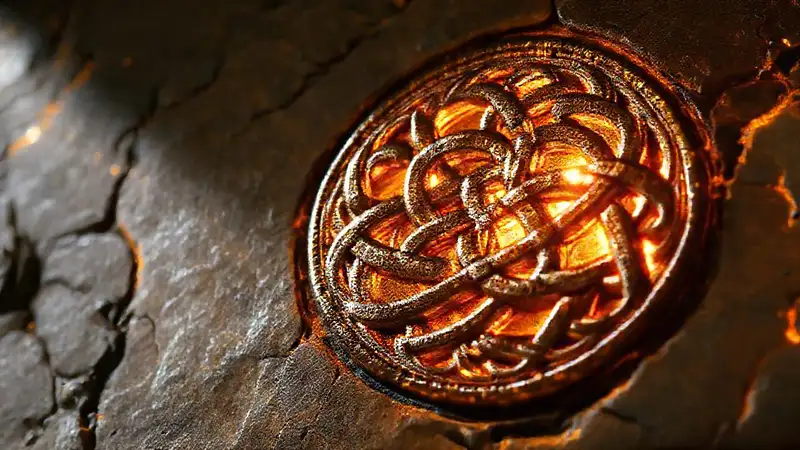Celtic art has captivated observers for centuries, and its intricate patterns – particularly knotwork – hold a profound and enduring significance. Far more than mere decorative embellishments, these interwoven designs reflect a complex worldview rooted in mythology, spirituality, and the natural world. They represent concepts of eternity, interconnectedness, and the cyclical nature of life and death, serving as potent symbols within Celtic society. The enduring popularity of Celtic knotwork today demonstrates its continued relevance and a powerful connection to a rich and captivating past.
The fascination with Celtic knotwork isn't just aesthetic; it's a window into the minds of a people deeply connected to their landscape and traditions. These aren’t randomly produced patterns; they are carefully constructed, reflecting a sophisticated understanding of geometry and a reverence for the unseen forces believed to govern the world. Decoding these patterns provides crucial insights into the beliefs, rituals, and social structures of ancient Ireland and the broader Celtic world.
The Druids and Their Role
The Druids were undoubtedly the most influential figures in ancient Irish society, and their role in shaping and preserving Celtic culture is undeniable. These priests, scholars, and judges held a position of immense authority, acting as intermediaries between the human and divine realms. Their knowledge extended to astronomy, medicine, law, and, crucially, the interpretation of sacred texts – frequently written on stone and wood. They were the keepers of oral traditions and responsible for passing down the lore of their ancestors.
Druidic practices centered around ceremonies and rituals intended to maintain harmony with nature and the gods. Evidence suggests they practiced divination, using methods like interpreting animal entrails and observing natural phenomena. They were fiercely protective of their knowledge, operating with a degree of secrecy and guarding against external influences, which contributed significantly to the limited surviving written record of their lives and beliefs. The power wielded by the Druids formed a cornerstone of the social and religious life of the time.
It’s important to note that our understanding of the Druids is largely based on extrinsic evidence – writings by Roman authors like Julius Caesar – alongside archaeological findings and later Irish lore. The exact nature and organization of Druidic colleges remain shrouded in some mystery, but their profound impact on Irish culture is firmly established.
Early Irish Society and Governance
Ancient Ireland wasn't a unified kingdom, but a collection of loosely allied tribes, each with its own territory and chieftains. These tribes operated under a complex system of laws and customs, often based on precedent and tradition. Land ownership was central to social and political standing, with powerful families wielding considerable authority over their territories. The brehon system, a sophisticated legal code, offered a framework for resolving disputes and maintaining order, emphasizing restorative justice rather than punitive measures.
Royal power was not absolute; it was frequently challenged and negotiated through feuds and alliances. The concept of rí (king) was complex, often representing a figurehead more than a true sovereign, with authority derived from the loyalty of his warriors and the respect of his people. Economic activity centered around agriculture, cattle rearing, and the trade of goods with neighboring tribes and occasionally, with Roman merchants. A strong emphasis on family and lineage underpinned the entire structure of early Irish society.
Despite the fragmented political landscape, a shared cultural identity – influenced by Celtic traditions and shaped by the Druids – provided a basis for cooperation and interaction between the various tribes. This shared heritage fostered a sense of belonging and contributed to the overall resilience of the Irish people.
The Arrival of Christianity and Cultural Synthesis

The introduction of Christianity in the 5th and 6th centuries CE dramatically reshaped the religious and cultural landscape of Ireland. Initially, Christianity was slow to take root, often coexisting with existing pagan beliefs and Druidic practices. Missionaries, particularly those from Scotland and Ireland itself, gradually converted the population, often finding common ground with existing spiritual concepts.
However, the process wasn’t simply a replacement of one belief system with another. Instead, a remarkable synthesis occurred, blending Christian theology with Celtic mythology and folklore. The cycle of the seasons, for instance, became associated with the Christian sacraments, and pagan deities were often reinterpreted as saints or angels. Irish monasteries, centers of learning and scholarship, played a crucial role in preserving Christian texts and promoting literacy throughout the island.
The construction of magnificent illuminated manuscripts, like the Book of Kells, vividly illustrates this cultural fusion, showcasing both Christian symbolism and the intricate artistry inherited from Celtic traditions. This blending of faiths and artistic styles created a uniquely Irish expression of Christianity, departing from the more austere forms found elsewhere in Europe.
Archaeological Evidence and Legacy
Excavations and archaeology continue to reveal vital information about life in ancient Ireland. Ringforts – circular earthen enclosures – provide evidence of settlement patterns and social organization. Hillforts, like Tara, served as centers of political and ceremonial activity, representing the power of the kings and the Druids. The discovery of bog bodies, remarkably preserved in the acidic peat, offer insights into burial rituals and prehistoric health.
Furthermore, the impressive stone monuments – such as the passage tombs at Newgrange – demonstrate the technological prowess and sophisticated understanding of astronomy possessed by the ancient Irish people. These sites, dating back thousands of years, underscore the long and continuous history of the island. The legacy of this ancient culture, visible in the landscape, its language, and its artistic traditions, continues to resonate strongly even today, representing a powerful and enduring element of Irish national identity.
Conclusion
Ancient Ireland stands as a testament to a civilization remarkably distinct and influential. Its intricate art, particularly knotwork designs, speaks volumes about a sophisticated worldview rooted in nature and spirituality. From the powerful Druids to the complex tribal structures, and finally the blending of pagan and Christian traditions, the history of this era reveals a dynamic and resilient culture.
Ultimately, the enduring fascination with ancient Ireland lies in its ability to transport us back in time, offering a glimpse into a world where mythology and reality intertwined, and where the legacy of the past continues to shape the present. The exploration of this rich heritage provides not only a deeper understanding of Irish history but also a valuable perspective on the broader tapestry of European culture.
 How did druids utilize herbal remedies and potions
How did druids utilize herbal remedies and potions How did the discovery of Deir el-Medina alter archaeological insights
How did the discovery of Deir el-Medina alter archaeological insights What archaeological evidence supports Celtic settlements
What archaeological evidence supports Celtic settlements What was the significance of the Tuatha Dé Danann myths
What was the significance of the Tuatha Dé Danann myths Describe the significance of burial mounds in Ireland
Describe the significance of burial mounds in Ireland What archaeological discoveries highlight early Irish architecture
What archaeological discoveries highlight early Irish architecture How did the Valley become a UNESCO World Heritage site
How did the Valley become a UNESCO World Heritage site
Deja una respuesta